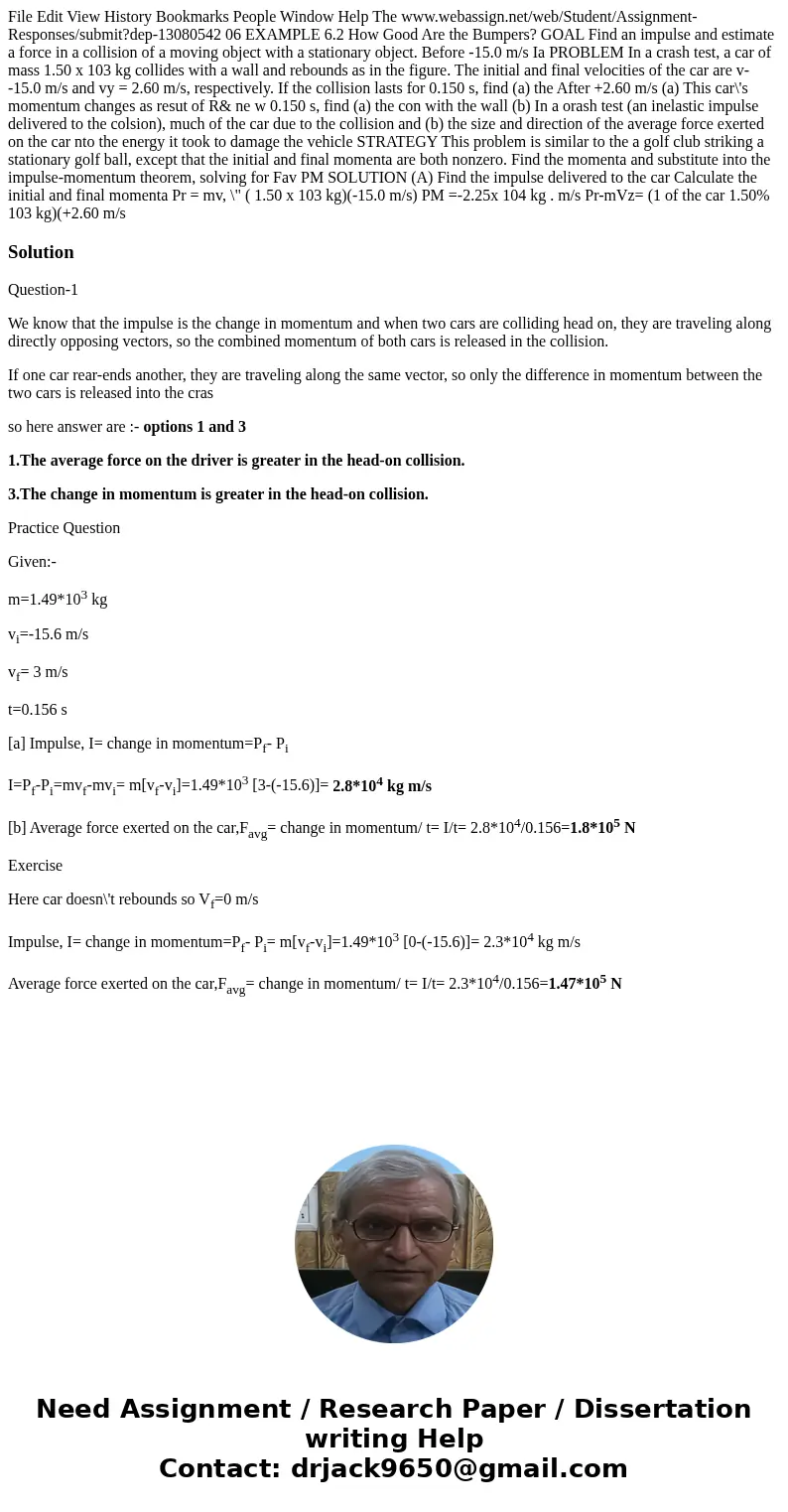File Edit View History Bookmarks People Window Help The www.webassign.net/web/Student/Assignment-Responses/submit?dep-13080542 06 EXAMPLE 6.2 How Good Are the Bumpers? GOAL Find an impulse and estimate a force in a collision of a moving object with a stationary object. Before -15.0 m/s Ia PROBLEM In a crash test, a car of mass 1.50 x 103 kg collides with a wall and rebounds as in the figure. The initial and final velocities of the car are v- -15.0 m/s and vy = 2.60 m/s, respectively. If the collision lasts for 0.150 s, find (a) the After +2.60 m/s (a) This car\'s momentum changes as resut of R& ne w 0.150 s, find (a) the con with the wall (b) In a orash test (an inelastic impulse delivered to the colsion), much of the car due to the collision and (b) the size and direction of the average force exerted on the car nto the energy it took to damage the vehicle STRATEGY This problem is similar to the a golf club striking a stationary golf ball, except that the initial and final momenta are both nonzero. Find the momenta and substitute into the impulse-momentum theorem, solving for Fav PM SOLUTION (A) Find the impulse delivered to the car Calculate the initial and final momenta Pr = mv, \" ( 1.50 x 103 kg)(-15.0 m/s) PM =-2.25x 104 kg . m/s Pr-mVz= (1 of the car 1.50% 103 kg)(+2.60 m/s
Question-1
We know that the impulse is the change in momentum and when two cars are colliding head on, they are traveling along directly opposing vectors, so the combined momentum of both cars is released in the collision.
If one car rear-ends another, they are traveling along the same vector, so only the difference in momentum between the two cars is released into the cras
so here answer are :- options 1 and 3
1.The average force on the driver is greater in the head-on collision.
3.The change in momentum is greater in the head-on collision.
Practice Question
Given:-
m=1.49*103 kg
vi=-15.6 m/s
vf= 3 m/s
t=0.156 s
[a] Impulse, I= change in momentum=Pf- Pi
I=Pf-Pi=mvf-mvi= m[vf-vi]=1.49*103 [3-(-15.6)]= 2.8*104 kg m/s
[b] Average force exerted on the car,Favg= change in momentum/ t= I/t= 2.8*104/0.156=1.8*105 N
Exercise
Here car doesn\'t rebounds so Vf=0 m/s
Impulse, I= change in momentum=Pf- Pi= m[vf-vi]=1.49*103 [0-(-15.6)]= 2.3*104 kg m/s
Average force exerted on the car,Favg= change in momentum/ t= I/t= 2.3*104/0.156=1.47*105 N

 Homework Sourse
Homework Sourse